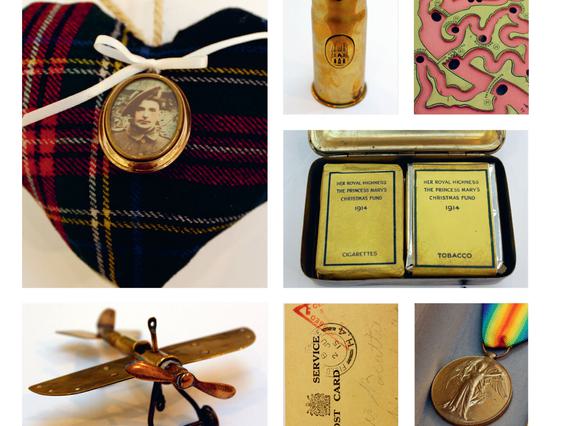
Next of Kin resources
The online resources developed for the Next of Kin touring exhibition provide opportunities to learn about the First World War in Scotland.
Next of Kin: Great War Stories across Scotland app
From a last letter home to an engagement ring found off the coast of Orkney, a mobile app was developed to provide a treasure trove of First World War family stories and artefacts.
- Explore 43 family stories through an interactive map or discover the common themes that link them together
- Investigate high quality zoomable images of artefacts kept by families and passed down through generations
- Read moving first-hand accounts from diaries and letters between loved ones
As of November 2019 the app is no longer available for download.
Family stories and objects from the exhibition can be accessed on the Historypin and Europeana Collections.
Nurse Mellor’s Autograph Books app
From satirical sketches to heartfelt poetry, this app gave a personal insight into the lives of nurses and their patients in Scottish War Hospitals during the First World War.
- Swipe through 86 pages of Nurse Florence Mellor’s three autograph books kept during her time at war hospitals in Fife and Craiglockhart
- Read transcripts of personal messages and verse penned by wounded soldiers in her care
- Magnify and rotate high quality images of humorous sketches and intricate drawings
As of November 2019 the app is no longer available for download.
Handling Resource information pack
A collection of handling objects relating to the exhibition themes is being used in learning activities at each tour venue. This resource can be used to support learning activities about the First World War as it includes object handling notes and ideas for things to do and make, such as crafts and creative writing.
[Edit: 30/09/20, page 47, The National Egg Collection for the Wounded was started by Poultry World in November 1914]
Voices from the stories
A range of voices available on our Soundcloud platform are taken from written correspondence between Scottish families featured in the exhibition. They bring the stories and personalities to life.



